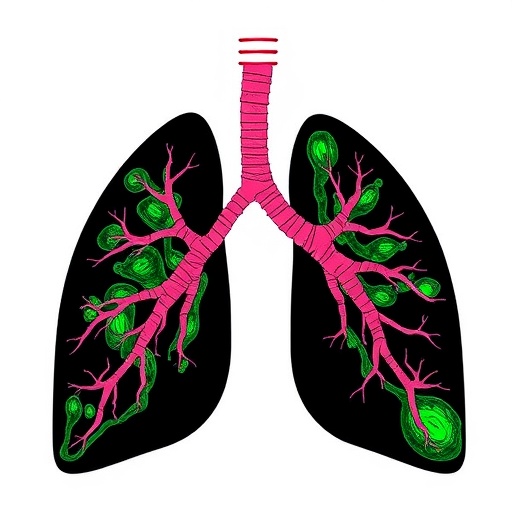The Unsung Battle Against Diabetes-Induced Male Infertility: Insights from Rodent Models
In recent years, the intersection of diabetes and male reproductive health has garnered considerable scientific attention. The study conducted by Asghar et al. presents pivotal findings regarding the detrimental impacts of streptozotocin-induced diabetes on male infertility, with insights derived from rodent models. The ramifications of such research resonate far beyond the laboratory, potentially influencing strategies for treating diabetes-related infertility in men.
Streptozotocin is a compound often employed in research settings to induce experimental diabetes in rodents. Its mechanism involves the selective destruction of insulin-producing beta cells within the pancreas, leading to hyperglycemia and a host of metabolic disturbances. This model is not merely a tool for understanding diabetes; it provides a clear window into the multifaceted effects this disease can have on reproductive health. The implications are striking when considering how diabetes prevalence continues to rise globally.
Emerging evidence suggests that diabetes may play a significant role in male infertility, complicating the lives of countless couples striving to conceive. The findings from Asghar’s study, particularly within the context of rodent models, highlight the biological pathways that may underpin this complex relationship. Through rigorous experimentation, researchers were able to observe alterations in hormonal profiles and testicular morphology that corresponded with the onset of diabetes. Such insights are critical, as they form the basis for understanding subsequent fertility issues.
Hormonal imbalance is a hallmark of diabetes that affects reproductive health. Among the myriad of hormones impacted, testosterone stands out for its essential role in spermatogenesis and overall male reproductive function. The research illustrates a concerning trend; diabetic rodents displayed significantly reduced testosterone levels, which correlates with diminished sperm production and quality. This hormonal deficiency could explain the barriers many diabetic men face when trying to conceive, marking an urgent area for intervention and treatment.
Additionally, testicular dysfunction has been documented as a significant complication stemming from diabetes. The architecture of the seminiferous tubules, which are essential for sperm development, can be adversely affected by hyperglycemic conditions. Asghar’s study meticulously details how structural modifications within these tubules may lead to impaired sperm output, reinforcing the notion that diabetes is not merely a metabolic disorder but one that imperils reproductive health as well.
The implications of these findings extend beyond biology into the realm of pharmacology. The study explores potential therapeutic avenues aimed at mitigating the reproductive consequences of diabetes. Pharmacological networking, a term that describes the intricate interplay of various therapeutic agents, emerges as a viable strategy. Asghar et al. propose exploring agents that can restore hormonal balance or protect testicular integrity in diabetic individuals, thereby improving fertility outcomes.
Another dimension of the research involves examining oxidative stress, a condition often exacerbated by diabetes. Elevated oxidative stress in diabetic patients can inflict cellular damage, including to reproductive cells. Understanding the oxidative pathways influenced by streptozotocin can be vital in developing antioxidant therapies aimed at ameliorating fertility challenges. The implication here is profound—by curbing oxidative stress, we may pave the way for improved sperm health and fertility rates in diabetic men.
Moreover, Asghar’s work highlights the importance of translational research. The insights gained from rodent models serve as a launchpad for potential human clinical applications. While rodent studies provide invaluable data, translating these findings to human subjects involves complex biological variances. However, the similarities in underlying pathophysiological mechanisms often provide hope for effective interventions that may one day assist diabetic men facing infertility.
As the prevalence of diabetes escalates, so too does the urgency for research that bridges basic science and clinical practice. Asghar and colleagues’ work emphasizes the importance of interdisciplinary efforts within biomedical research. The collaboration of endocrinologists, urologists, and pharmacologists may be imperative in tackling the multifaceted challenges posed by diabetes-related infertility.
In conclusion, the examination of streptozotocin’s impact on male infertility paves a critical pathway toward understanding the broader implications of diabetes on reproductive health. As the scientific community delves deeper into the biological mechanisms at play, actionable strategies will undoubtedly emerge. The quest for novel therapeutics that could restore fertility in diabetic men is not merely an academic endeavor but a vital avenue that may significantly enhance quality of life for countless individuals and couples hoping to conceive.
In essence, diabetes is a complex condition that incurs widespread physiological consequences. Research illuminating the nexus between diabetes and male infertility underscores the necessity for focused studies and innovative treatments to help those affected by this silent epidemic. Awareness and education around these topics remain paramount as the global health community strives to support and inform diabetic patients on their reproductive health journeys.
Subject of Research: The impact of streptozotocin-induced diabetes on male infertility.
Article Title: Understanding the impact of streptozotocin on diabetic male infertility: perspectives from rodent models and pharmacological networking.
Article References:
Asghar, M.A., Li, L., Wu, J. et al. Understanding the impact of streptozotocin on diabetic male infertility: perspectives from rodent models and pharmacological networking. BMC Pharmacol Toxicol 26, 161 (2025). https://doi.org/10.1186/s40360-025-00998-w
Image Credits: AI Generated
DOI: 10.1186/s40360-025-00998-w
Keywords: diabetes, male infertility, streptozotocin, hormonal imbalance, oxidative stress, pharmacological networking, translational research, reproductive health.
Tags: diabetes and reproductive healthdiabetes prevalence and infertilitydiabetes treatments for infertilityhormonal alterations in diabetic maleshyperglycemia and infertilityimpacts of diabetes on male fertilityinsulin-producing beta cells destructionmale infertility researchmale reproductive health challengesrodent models in diabetes studiesStreptozotocin-induced diabetesunderstanding diabetes-related infertility





